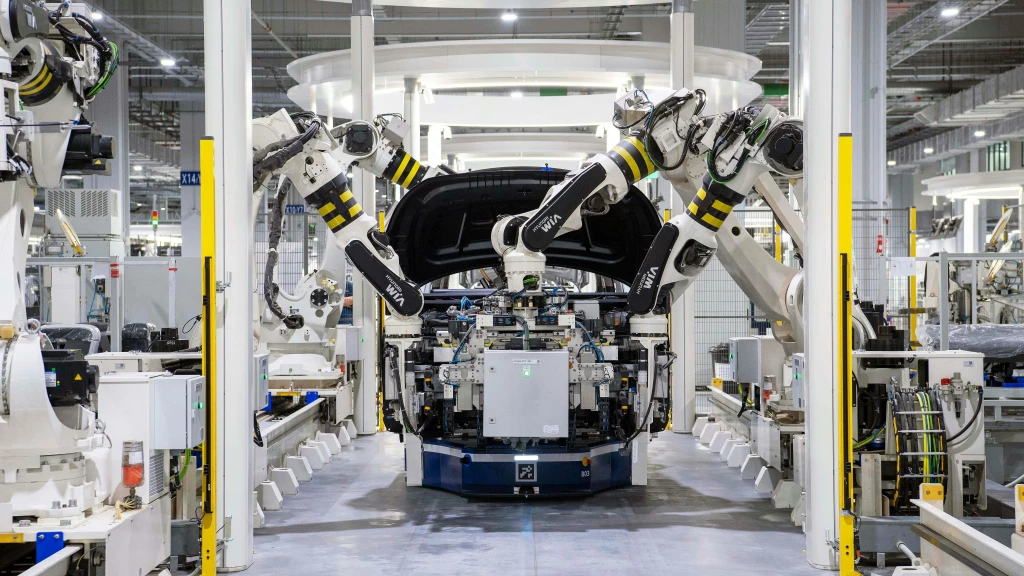Robotics and Automation in Canadian Industry
Visits: 882

Robotics and Automation in Canadian Industry
Robotics and automation are revolutionizing industries across Canada, from manufacturing and healthcare to agriculture and retail. This extensive adoption is not just reshaping workplaces but also boosting Canada's competitiveness in global markets. Let’s dive deeper into the subject, exploring its applications, economic impact, benefits, and the challenges faced by businesses.
What Are Robotics and Automation?
Before we explore their impact, it's essential to understand these terms in simple words:
- Robotics: Machines or robots designed to assist or replace human efforts in performing tasks. Examples range from robotic arms in factories to drones in agriculture.
- Automation: The use of software, sensors, and machines to perform tasks without direct human intervention. Common examples include self-checkout kiosks at stores or automated warehouse sorting systems.
How Are Robotics and Automation Transforming Canadian Industries?
Manufacturing and Industry
Canada's manufacturing industry heavily relies on robotics for assembly lines, packaging, and quality control.
| Key Area | Example |
|---|---|
| Assembly lines | Robotic arms used in car manufacturing improve speed and precision. |
| Quality assurance | Automated sensors and cameras detect defects in products instantly. |
| Packaging | Robots handle delicate products like electronics with efficiency. |
Automation has helped companies maintain global standards, reduce waste, and operate around the clock.
Agriculture
Agriculture is becoming smarter through robotics and automation. Farmers are using technology to optimize operations and save resources.
| Technology | Function |
|---|---|
| Drones | Monitor crop health, map fields, and assess soil conditions. |
| Robotic tractors | Automate planting, fertilizing, and harvesting. |
| Smart irrigation systems | Provide water based on crop needs, reducing waste. |
Healthcare and Medical Technology
Canada’s healthcare sector is adopting robotics and AI to improve treatment and patient outcomes.
| Robotic Tool | Application |
|---|---|
| Surgical robots | Help perform precise operations, reducing recovery time. |
| AI diagnostic systems | Analyze medical data for faster and more accurate diagnoses. |
| Automated pharmacies | Dispense medications quickly and accurately. |
Logistics and Transportation
Automation is transforming how goods are stored, tracked, and delivered.
| Technology | Function |
|---|---|
| Automated warehouses | Robots sort, move, and organize inventory in warehouses. |
| Self-driving vehicles | Pilot projects for trucks and delivery drones are underway. |
| Predictive logistics | AI forecasts demand, improving supply chain efficiency. |
Economic Benefits of Robotics and Automation
Productivity Gains
Automation allows industries to produce more with fewer resources. A study by Statistics Canada found that automated industries saw a 25-30% increase in productivity over the last decade.
New Job Opportunities
While automation replaces some jobs, it creates new roles in programming, robotics maintenance, and AI system design. For instance:
- Traditional roles: Assembly workers shifting to robot operators.
- Emerging roles: Software engineers developing robotic control systems.
Global Competitiveness
Canadian businesses leveraging robotics are better positioned to compete internationally by offering higher quality and lower costs.
Challenges Faced by Canadian Businesses
High Initial Costs
Investing in robotics can be expensive, particularly for small businesses. A robotic arm can cost upwards of $50,000.
Workforce Concerns
Automation raises fears of job losses. Workers in repetitive or manual roles may find their positions at risk unless retraining programs are implemented.
Cybersecurity Risks
Automated systems are vulnerable to hacking, potentially leading to production delays or theft of sensitive information.
Government Support and Incentives
Canada recognizes the importance of robotics and automation. Several programs provide financial and technical support to businesses adopting these technologies:
| Program Name | Description |
|---|---|
| Innovation Superclusters | Funds projects that integrate AI and robotics in various industries. |
| Canada Job Grant | Helps businesses fund employee retraining for working with new technologies. |
| Scientific Research & Experimental Development (SR&ED) Tax Credits | Supports businesses investing in R&D, including automation technologies. |
Future of Robotics and Automation in Canada
| Trend | Description |
|---|---|
| Cobots (Collaborative Robots) | Robots designed to work safely alongside humans, improving efficiency without replacing jobs. |
| AI-Driven Automation | Machines that learn and adapt, allowing for smarter operations and decision-making. |
| Sustainable Automation | Focus on energy-efficient robots and eco-friendly processes to combat climate change. |
Case Study: Successful Implementation
Company: Linamar Corporation (Ontario)
Linamar, a leading auto parts manufacturer, adopted robotics and automation to improve productivity.
- Impact: Reduced production costs by 20% and improved product quality significantly.
- Lesson: Even traditional industries can innovate and thrive with robotics.
Action Plan for Businesses
- Start Small: Begin with automation tools that fit your budget, such as software for repetitive tasks.
- Seek Government Grants: Explore programs like SR&ED or local funding initiatives.
- Invest in Employee Training: Prepare your team to work with new technologies.
- Collaborate: Partner with tech firms or universities to adopt robotics tailored to your industry.
Conclusion
Robotics and automation are not just the future—they are the present reality for Canadian industries. They offer unmatched opportunities for efficiency, innovation, and global leadership. By embracing these technologies responsibly, businesses of all sizes can thrive in an increasingly automated world.
